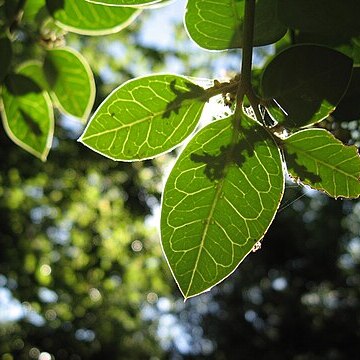Trees or shrubs, bisexual (Mal.). Leaves spiral, entire and slightly revolute at the edge (Mal.), petiolate. Inflorescences terminal and/or (supra-)axillary, paniculate or thyrsoid, cymes of secondary branches scorpioid, whether or not forked, in Mal. greyish to rusty hirsute. Flowers 5-merous, sessile, subtended by a minute bract. Calyx imbricately lobed ⅓ to ½, persistent. Petals free, valvate, or subimbricate in the upper part, apex inflexed, midrib inside much prominent, sometimes wing-like. Stamens 5, free; filaments fleshy, subulate; anthers elliptic, or ovate, or subcordate, introrse, basifixed. Disk 0. Ovary subgibbous, 1-celled, rarely 2-celled by the presence of a pseudoloculus. Style 1 (rarely 2), slender, stigma small, capitate, subbilobed. Drupe moderately fleshy; endocarp woody, rather thin. Seed 1, longitudinally plicate around the vertical pseudoloculus, hippocrepiform; embryo in the copious endosperm small.
Trees or (not in Australia) shrubs, bisexual, polygamous or dioecious. Leaves alternate, entire or (not in Australia) spinose-dentate. Inflorescence leaf-opposed, supra-axillary, axillary or (not in Australia) terminal, thyrsoid; secondary branches cymose with 2-12 sessile flowers clustered on common peduncles. Calyx cupular, 5-lobed; lobes imbricate. Petals 5, free, valvate or slightly imbricate in bud; mid-vein keeled inside. Stamens 5, free; filaments subulate; anthers latrorse to introrse, dorsifixed, glabrous. Ovary ovoid, 1-locular, rarely 2-locular; ovules 2 or 3 per locule. Style 1, rarely 2, slender; stigma capitate, bilobed. Fruit a 1-seeded drupe; endocarp woody. Seed with a longitudinal groove formed by an intrusion of the endocarp wall.

